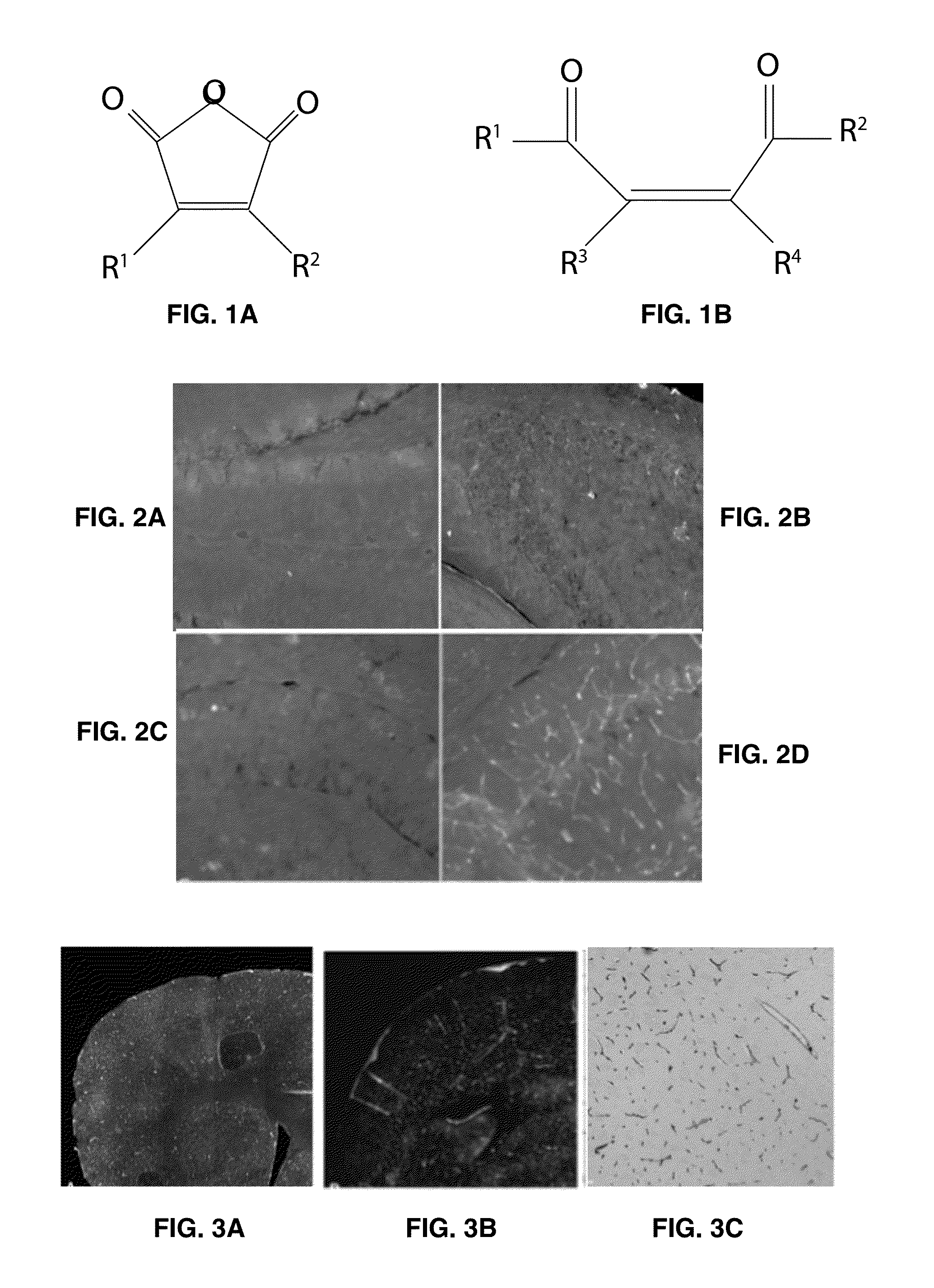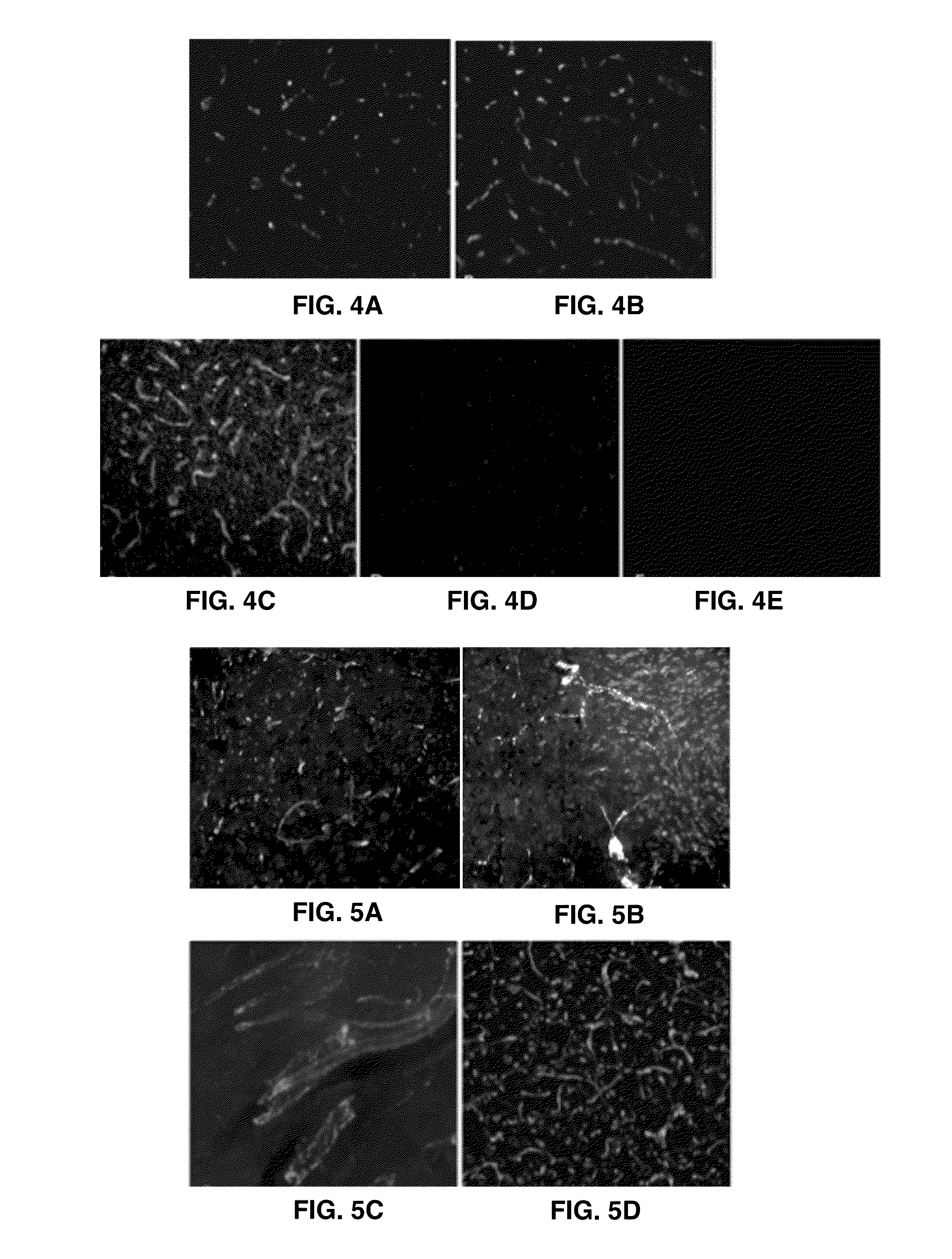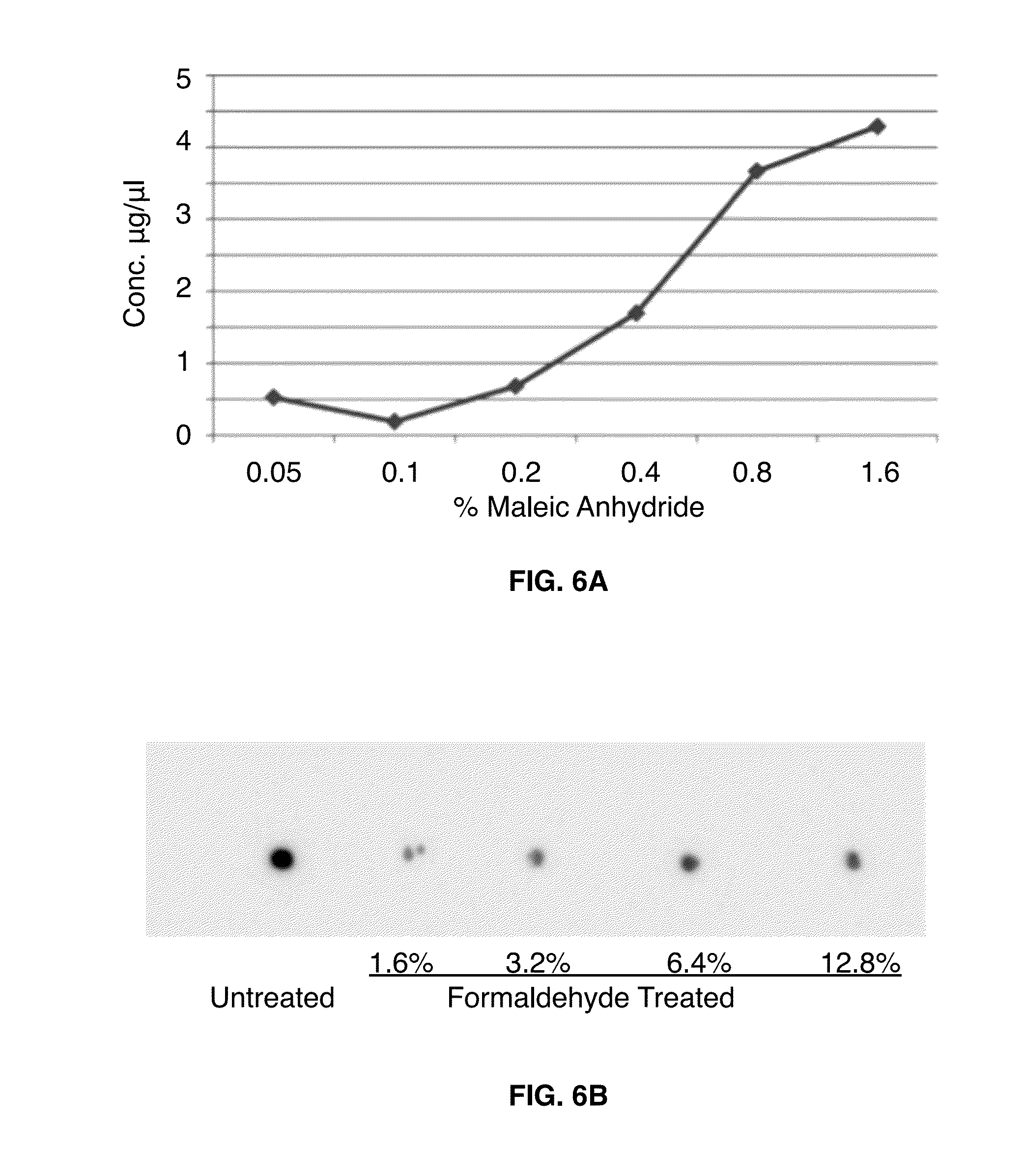Universal Antigen Retrieval Compounds and Methods of Use
a technology of universal antigen retrieval and compound, which is applied in the field of protein detection and histology, can solve the problems of inability to easily formulate compounds, inability to penetrate paraffin wax or/and antibody molecules, and inability to achieve easy formulation of methods and compounds, so as to improve the detection of amino acids
- Summary
- Abstract
- Description
- Claims
- Application Information
AI Technical Summary
Benefits of technology
Problems solved by technology
Method used
Image
Examples
example 1
Compounds
[0050]Representative aldehyde scavenging agents effective to react with aldehyde within a particular pH range include but are not limited to amino ethanol derivatives including, aminoethanol, N-Methylaminoethanol, 2-(hydroymethyl)piperidine, 2-(hydroxymethyl)pyrrolidine, N-benzylaminoethanol, Amino(bis ethanol), 2-amino-2-methyl-1,3-propanediol; serine, threonine, chitosan, tris(hydroxymethyl)aminomethane, amino acids and derivatives including, arginine, lysine, glycine, histidine, 5-hydroxytryptophane, carnosine, other amine and aniline containing compounds including guanidine, morpholine, 2-hydroxymethylpiperidine, ammonia, ammoniumcarbonate, hydroxylamine, O-alkylated hydroxylamine, N-alkylated hydroxylamine, O,N-alkylated hydroxylamine, hydroxymethylamine, methoxyamine, dibutylamine, triethylenetetramine, benzylamine, thiabendazole, benzotriazol, triazole, indoline, benzoguanamine, 3,4-diaminobenzoic acid, methyl 4-aminobenzoate, aniline; 1-amino-2-indole; a polyoxyalky...
example 2
Antigen Retrieval in Formaldehyde Fixed Tissue: General Method
[0051]Small amounts of one or a mixture of compounds, for example, from Table 1 are added to water, in a 0.05% concentration. The solution is heated to about 70° C. to about 95° C. for about 30 minutes. The ensuing chemical reaction enables the unmasking or retrieval of the chemical epitopes. The formaldehyde-fixed tissue is placed into the heated solution for about 30 minutes and then washed. The tissues can then be stained to detect the protein of interest. Superior antigen retrieval and immunodetection of collagen IV, a vascular protein, in paraformaldehyde fixed tissues was demonstrated using maleic anhydride (FIGS. 2A-2D).
example 3
[0052]Antigen Retrieval is Cross Compatible with Different Immunohistochemical Methods
[0053]The method of antigen retrieval is compatible and enhances visualization of proteins in multiple forms of processed tissues. Micrographs illustrate an enhanced visualization in paraformaldehyde fixed cryostat sectioned tissues visualized using immunofluorescence, and formaldehyde fixed paraffin embedded tissue visualized using a DAB chromagen by immunohistochemistry (FIGS. 3A-3D).
PUM
| Property | Measurement | Unit |
|---|---|---|
| temperature | aaaaa | aaaaa |
| temperature | aaaaa | aaaaa |
| temperature | aaaaa | aaaaa |
Abstract
Description
Claims
Application Information
 Login to View More
Login to View More - R&D
- Intellectual Property
- Life Sciences
- Materials
- Tech Scout
- Unparalleled Data Quality
- Higher Quality Content
- 60% Fewer Hallucinations
Browse by: Latest US Patents, China's latest patents, Technical Efficacy Thesaurus, Application Domain, Technology Topic, Popular Technical Reports.
© 2025 PatSnap. All rights reserved.Legal|Privacy policy|Modern Slavery Act Transparency Statement|Sitemap|About US| Contact US: help@patsnap.com



